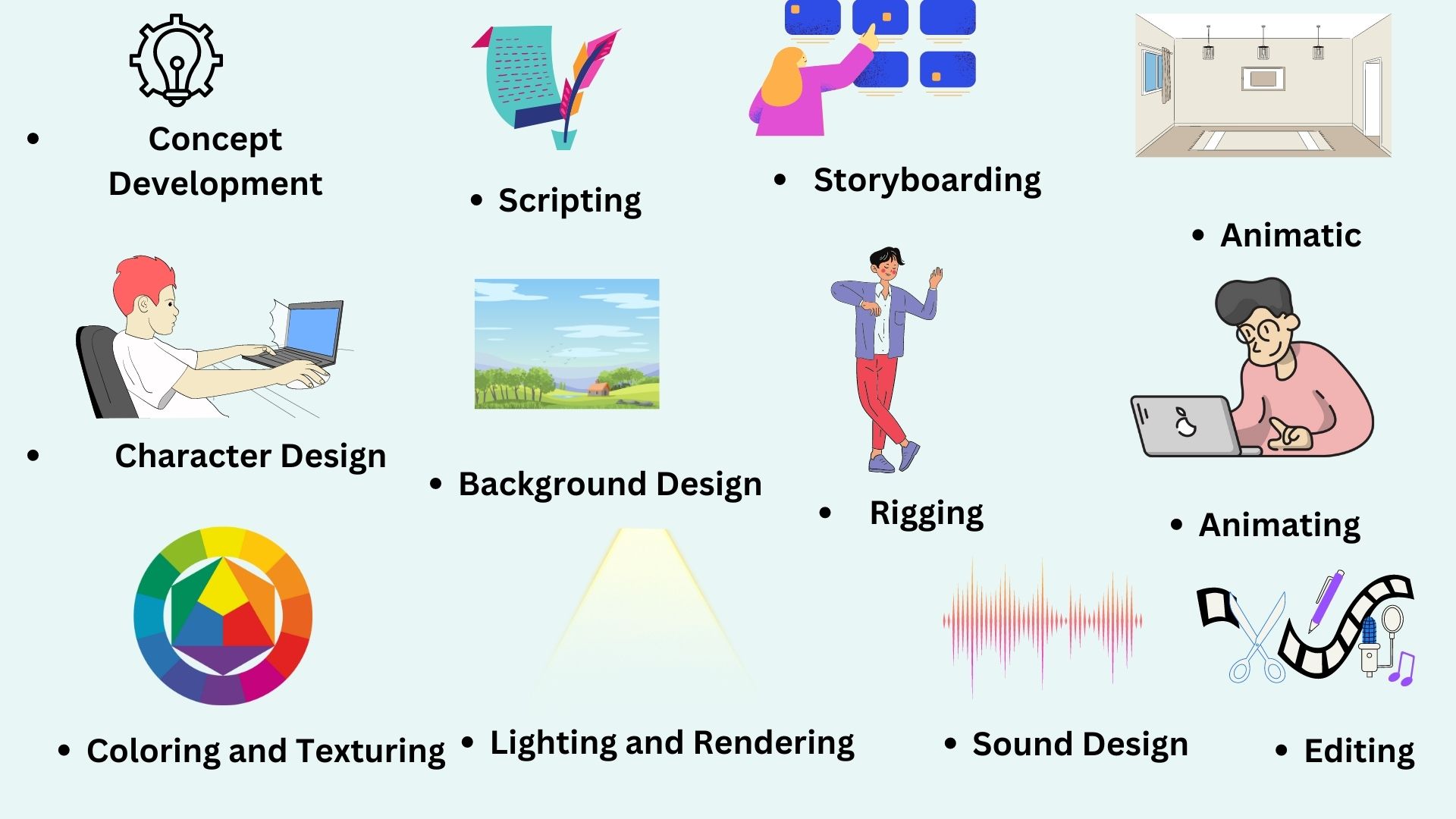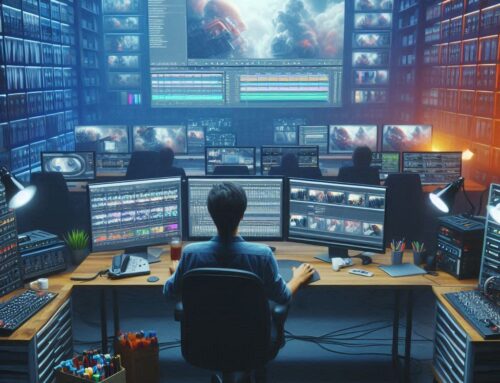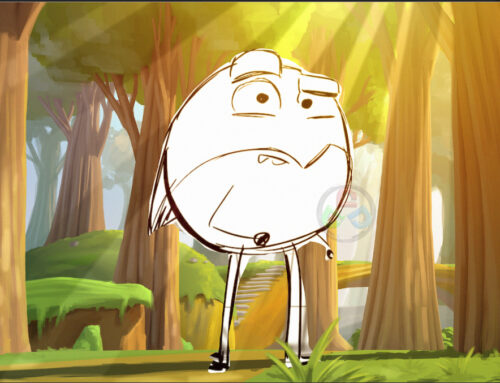Contact us for 2D Animation Services
Creating a 2d cartoon character can be a fun and rewarding experience, even if you’re just starting out. The world of cartoons is diverse, ranging from simple designs to intricate ones. As a beginner, it might seem daunting to create complex characters, but remember, simplicity is key.
Simple designs can be just as engaging and expressive as complex ones. They can effectively convey a wide range of emotions and actions, making them far from boring. Starting with simple shapes and designs allows you to focus on the character’s personality and emotions, which are the heart of any cartoon.
So, if you’re a fan of cartoons and want to create your own character, don’t hesitate. Start with simple shapes, explore different expressions, and gradually add more details as you become more comfortable. Remember, every expert was once a beginner. So, take that first step, and before you know it, you’ll have a charming cartoon character ready for animation. Now lets learn how to make a fun 2D animation! Just like a cartoon on TV, but you can make it yourself. Here are the steps:
Creating a storyboard is like planning your cartoon’s adventure. Let’s imagine we’re creating a storyboard for a cartoon about a superhero dog named “Barky”.
Draw Squares: Start by drawing squares on a piece of paper. Each square is like a TV screen showing a different part of Barkly’s adventure. For example, in the first square, we might draw Barky in his dog house.
Sketch the Scenes: Inside each square, sketch what happens. In the second square, maybe Barky hears a cry for help. In the third square, he could be seen putting on his superhero cape.
Add Dialogue: Below each square, write down what the characters are saying. Under the first square, you might write, “What a lovely day!” Under the second square, “Did someone call for help?” And under the third, “Time to save the day!”
Review and Revise: Look at your storyboard. Does the story make sense? Is it exciting? If not, it’s okay to erase and change things. The storyboard is your plan, and it’s easier to change a plan than a finished cartoon.
Start with a Template or Draw from Scratch: Creation of 2D cartoon character
Starting with a template or drawing from scratch are two different ways to begin creating your cartoon.
Templates are like coloring books. They have pre-drawn characters and scenes, and you just need to add color and make them move. For example, if you’re making a cartoon about a superhero, you might find a template with a superhero character and a city background. You can change the superhero’s costume color, make him fly around the city, and add your own dialogue. Templates are a great way to save time and effort, especially if you’re new to animation.
On the other hand, drawing from scratch means you start with a blank canvas and create everything yourself. If you’re making a cartoon about a space alien, you would draw the alien, the spaceship, and the distant planets all by yourself. This gives you complete creative freedom to make your cartoon exactly how you want it. However, it can take more time and requires more drawing skills.
Both methods have their advantages, so choose the one that suits your needs and skills the best.

Create Your 2D Cartoon Character:
Next, you need to create your 2D cartoon character. Creating your first cartoon character is an exciting journey! It all starts with a single idea. You might have a lot of ideas, but the first step is to focus on one.
Imagine your character. What’s the first word that comes to mind? It could be anything like “brave“, “funny“, “smart“, or even “mysterious“. This word will be the core of your character’s personality.
Next, think about the world your character lives in. Is it a bustling city in the present day? A quiet village in the past? Or maybe a futuristic space station? The setting can add depth to your character’s story.
Now, it’s time to add details to your character. These details should reflect the personality and setting you’ve chosen. For example, a “brave” character might have a superhero costume, while a “funny” character might have oversized glasses.
Remember, every detail should help the viewer understand your character better. So, take your time, let your imagination run wild, and have fun creating your cartoon character! If you have someone who knows how to animate, they can use a program like Maya. If not, you can use a simpler program like Vyond Studio, which lets you create characters even if you’re new to animation.
Choose the Right Location:
Choosing the right location for your cartoon characters is like setting the stage for a play. It’s important that the location matches the story and characters.
For example, if your character is a fish named Finny, the underwater world would be the perfect setting. You could draw colorful corals, other sea creatures, and maybe even a sunken pirate ship for Finny to explore! This makes sense because fish live in water, and it would be strange to see Finny flying in the sky or walking in a desert.
The location can also help tell the story. If Finny finds a treasure map, the pirate ship could become an important part of the story. Or if Finny makes friends with a lost dolphin, the wide ocean could show how they help each other find their way home.
So, when you’re creating your cartoon, think about where your characters would live, what places they would visit, and how these locations can help tell their story. Remember, every detail in your cartoon, including the location, helps bring your characters to life! Make sure your characters are in a place that makes sense for your story.
Move the Camera:
Choosing the right location for your cartoon characters is like setting the stage for a play. It’s important that the location matches the story and characters.
For example, if your character is a fish named Finny, the underwater world would be the perfect setting. You could draw colorful corals, other sea creatures, and maybe even a sunken pirate ship for Finny to explore! This makes sense because fish live in water, and it would be strange to see Finny flying in the sky or walking in a desert.
The location can also help tell the story. If Finny finds a treasure map, the pirate ship could become an important part of the story. Or if Finny makes friends with a lost dolphin, the wide ocean could show how they help each other find their way home.
So, when you’re creating your 2D cartoon character, think about where your characters would live, what places they would visit, and how these locations can help tell their story. Remember, every detail in your cartoon, including the location, helps bring your characters to life!
Use Motion Paths: 2D cartoon character
Motion paths are like invisible roads that objects in your animation can move along. They help bring your animation to life by adding movement and action.
For example, let’s say you’re animating a story about a race car named Speedy. You want Speedy to race across the screen from left to right.
Draw the Path: First, you would draw a motion path. This path would start at the left side of the screen (where Speedy is) and end at the right side of the screen (where Speedy wants to go).
Attach Speedy to the Path: Next, you would attach Speedy to the path. Now, Speedy is ready to move!
Animate: When you play your animation, Speedy will follow the path and race across the screen.
You can make motion paths straight, curved, or any shape you want. You can also control how fast or slow objects move along the path. So, whether you’re animating a flying bird, a bouncing ball, or a racing car, motion paths can help make your animation more exciting and fun!
Add Music and Sound Effects: Music and sound effects play a crucial role in creating engaging 2D cartoon characters and scenes. They bring your animations to life and make them more immersive and enjoyable.
Imagine you’re watching a cartoon about a jolly clown named Jingles. When Jingles walks, his big shoes make a funny squeaking sound. When he juggles, you hear the soft thud of balls landing in his hands. And when he laughs, you hear a joyful, contagious laughter that makes you want to laugh along. These sound effects make Jingles feel real and relatable.
Now, imagine a cheerful tune playing in the background. The music sets the mood of the scene and enhances the emotions you feel. When Jingles successfully performs a difficult trick, triumphant music makes you share in his sense of accomplishment.
In essence, music and sound effects are the heartbeat of your cartoon, adding depth and dimension to your 2D characters and their world. So, don’t forget to include them in your animation!
Imagine a world where every industry, from entertainment to healthcare, harnesses the power of 2D animation. It’s not just about creating cartoons or games, it’s about telling stories, simplifying complex ideas, and engaging audiences like never before.
With 2D animation, advertisers can create memorable ads that resonate with viewers. Educators can make learning fun and interactive. Businesses can train employees effectively and present data in an appealing way. Even healthcare professionals can practice procedures in a safe, virtual environment.
And let’s not forget about social media, where animated content can help brands connect with their audience and stand out in the digital crowd.
In essence, 2D animation is not just a tool, it’s a game-changer. It’s the future of communication, education, and entertainment. So, whether you’re a business owner, an educator, a marketer, or a game developer, it’s time to embrace 2D animation and let it transform the way you work and create. The future is animated! If you want to create 2D/3D Animation Contact us.
Written By-
Harsh Chauhan – 3D Services India
Harsh Chauhan is a dynamic professional, currently serving as a Manager at 3D Services India, where he closely monitors ongoing developments in the VFX and Animation industry. He is also the author of “Beyond the Green Screen,” a popular newsletter that explores the latest trends in the field. Harsh is the founder of Art Palace, a hub for 3D rendering services, and he is a talented live sketch artist and author of the book “Jawaab,” showcasing his diverse talents and commitment to creativity and innovation.
© 2023 3D Services India. All Rights Reserved.




